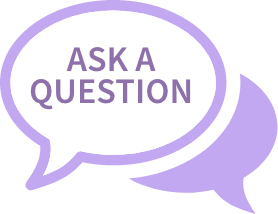How to Minimize Bruising After Breast Augmentation
Breast augmentation stands as one of the most popular procedures sought after by people seeking to enhance their appearance. This surgical intervention offers the opportunity to achieve the desired breast shape, size, and symmetry. But just like any surgical procedure, breast augmentation requires a certain recovery period during which patients may encounter challenges, such as bruising and swelling. While it is normal to experience these effects after breast augmentation surgery, it’s essential to understand what to do during recovery to minimize their impact on your overall well-being. Bruising and swelling are common side effects of breast augmentation surgery, caused by the body’s natural response to trauma and the manipulation of tissues during the procedure.
Minnesota Plastic Surgeon Dr. Joe Gryskiewicz is a highly accomplished plastic surgeon known for his exceptional skills in performing Breast Augmentation procedures.
Why Do Bruising and Swelling Occur After Breast Augmentation?
Bruising happens when blood vessels are damaged, leading to blood seeping into the surrounding tissue. Swelling, on the other hand, is a result of your body’s efforts to heal the surgical area, leading to a buildup of fluid.
The healing process after breast augmentation is an essential phase that your body undergoes to repair the surgical area. It involves different stages, including inflammation, proliferation, and remodeling. The inflammation stage, which causes swelling and bruising, is the first phase where your body attempts to protect the area from further harm.
Factors Influencing Recovery Time
The time it takes for your body to recover from a breast augmentation surgery can depend on several factors. These include your overall health, the type of procedure you had (for example, saline implants or fat transfer), and how well you follow post-surgery instructions. It’s important to understand that everyone’s body is unique, and healing time will vary from person to person.
Practical Tips to Minimize Bruising and Swelling
Pre-Surgery Preparations
It’s important to note that certain preparations can be made prior to your breast augmentation to minimize the risk of excessive bruising and swelling. Here are some recommendations to consider:
- Follow Dr. Joe’s instructions: Dr. Joe will provide you with specific guidelines to follow before surgery. It is important to adhere to these instructions, which may include avoiding certain medications that can thin the blood or increase the risk of bleeding.
- Quit smoking: If you smoke, it is highly recommended to stop smoking well in advance of your surgery. Smoking can interfere with your body’s ability to heal and increase the likelihood of complications such as bruising and delayed wound healing.
- Optimize your nutrition: A healthy diet rich in vitamins and minerals can support your body’s healing process. Make sure to consume a balanced diet with plenty of fruits, vegetables, lean proteins, and whole grains. These nutrients will provide your body with the necessary building blocks for tissue repair.
- Stay hydrated: Proper hydration is essential for optimal healing. Drinking enough water helps maintain the elasticity of your skin and promotes healthy blood circulation. Aim to drink at least 8-10 glasses of water per day leading up to your surgery.
- Arrange for post-operative assistance: You will need someone to stay with you the first night after surgery. You should be good to go alone after that.
Post-Surgery Care
Proper care after your surgery is important to reducing bruising and swelling.
- Apply cold compresses: Cold compresses can help reduce swelling and ease discomfort. Use ice packs wrapped in a clean cloth or a bag of frozen peas, and apply them gently to your breasts for 15-20 minutes at a time. Remember to take short breaks in between to allow your skin to warm up.
- Elevate your upper body: Keeping your upper body elevated can assist in reducing swelling. Prop yourself up with pillows while resting or sleeping to maintain a slightly inclined position. This helps promote proper blood circulation and lymphatic drainage.
- Gentle movements and activities: Engage in light activities and gentle movements as recommended by Dr. Joe. Avoid strenuous exercises or heavy lifting for three weeks.
- Stay hydrated and nourished: Good nutrition is vital for the healing process. Ensure you continue to drink an adequate amount of water to stay hydrated. Consume nutrient-rich foods, including fruits, vegetables, lean proteins, and whole grains. These will provide your body with the necessary nutrients for tissue repair.
- Avoid blood-thinning substances: Certain substances can increase the risk of bruising and swelling. Avoid consuming alcohol, as it can interfere with the healing process and increase swelling. Additionally, refrain from taking over-the-counter medications, supplements, or herbs that may thin the blood. Always consult with Dr. Joe before taking any new medications.
- Gentle massage techniques: Dr. Joe may recommend gentle massage techniques to help reduce swelling and promote proper lymphatic drainage. Follow his instructions precisely and use gentle motions pushing your implants toward the midline of your breast bone.
- Be patient and allow yourself to heal: Remember that healing is a gradual process, and it’s essential to be patient with your body. Avoid comparing your recovery to others, as everyone’s healing process is unique. Give yourself the time and space needed to heal properly.
What to Avoid to Minimize Swelling and Bruising After Breast Augmentation
To minimize swelling and bruising after breast augmentation and/or a breast lift with implants, it is important to avoid the following:
- Avoid strenuous physical activities or exercise that may strain the surgical area for three weeks.
- Refrain from lifting heavy objects, as it can put unnecessary pressure on the healing tissues for three weeks.
- Steer clear of smoking and alcohol consumption, as they can impede the healing process and increase the risk of complications.
- Avoid taking medications or supplements that thin the blood, unless specifically instructed by your surgeon.
- Do not expose the surgical area to excessive heat, such as hot baths or saunas, as it can worsen swelling.
- Avoid wearing tight or restrictive clothing that may constrict blood flow to the surgical area.
- Steer clear of sleeping on your stomach or sides, as it can apply pressure to the breasts and lead to increased swelling.
- Avoid direct sunlight or tanning beds, as they can cause irritation and interfere with the healing process.
- Refrain from applying excessive pressure to the breasts for three weeks.
- Avoid skipping or neglecting your post-operative follow-up appointments with your surgeon.
When to Seek Medical Advice After Breast Augmentation
- Signs of Complications: Although bruising and swelling are normal parts of the healing process, there are certain signs you should watch out for. Severe or increasing pain, excessive redness around the surgical area, discharge from the incisions, or a high temperature could be indicators of a complication such as an infection or a reaction to the implant. Should you notice any of these signs, you should seek medical attention immediately.
- Importance of Regular Check-Ups: Regular follow-ups with Dr. Joe are an integral part of your recovery process. These appointments allow Dr. Joe to monitor your healing progress and address any concerns that may arise. It is important to keep these appointments and avoid skipping them, even if you feel well. Dr. Joe has the expertise to identify potential issues that you might not be aware of.
FAQs About Minimizing Bruising After Breast Augmentation
How long does swelling after breast augmentation last?
Swelling after breast augmentation is a normal part of the healing process. Generally, you can expect the swelling to peak within the first few days after surgery and gradually subside over the following weeks. However, the duration of swelling can vary from person to person. In most cases, significant improvement is noticeable within the first month, but it may take several months for all swelling to completely resolve. Following your surgeon’s post-operative instructions, such as wearing compression garments and taking prescribed medications, can help minimize swelling and promote a faster recovery.
Can I apply ice or cold compresses to reduce swelling?
Yes, applying ice or cold compresses to the surgical area can help reduce swelling after breast augmentation. Cold therapy constricts blood vessels, decreasing blood flow to the area and reducing inflammation. In most cases, cold compresses are recommended in the immediate post-operative period, usually for short durations at a time. Using a thin cloth or barrier between the cold pack and your skin is advisable to prevent direct contact and potential skin damage.
When should I be concerned about excessive swelling or bruising?
While some swelling and bruising are expected after breast surgery, there are instances where you should seek medical advice. If you notice a sudden increase in swelling or bruising, experience severe pain that is not alleviated with prescribed pain medications, or observe any signs of infection (such as redness, warmth, or discharge from incision sites), it is important to contact your surgeon promptly. These could be indications of a complication that requires medical attention
Further Reading about Breast Augmentation with Dr. Joe
- Read Dr. Joe’s Breast Augmentation with Lift
- Read Dr. Joe’s Breast Reduction
- Read Dr. Joe’s Blog about Common Reasons for Breast Implant Revision Surgery
- Read Dr. Joe’s Blog about What Is a Mini Boob Job?
- Read Dr. Joe’s Quick Recovery Breast Augmentation
Medical References About Reducing Bruising after Breast Surgery
- Enhanced Recovery Following Breast Surgery – NHS
- Risks and Complications of Breast Implants – FDA
- Seroma: Causes, Treatment, And Recovery – Medical News Today
- Breast Reduction Surgery: Purpose, Procedure, Risks – WebMD



